Perk Up with 6 Tasteful Malaysian Drinks
Lighten your mood and rejuvenate your senses with 6 must-try Malaysian drinks!
Discover the authentic in Asian cuisine food

Soy sauce is a basic core ingredient in Asian cuisines, as a flavour-maker and table condiment. Although originated from ancient China, every Asian culture has its own variants for its signature tastes. Japanese soy sauce or Shoyu is generally made from a mix of fermented soybeans and wheat and has a salty, sherry-like flavour with a subtle sweet tone – much more complex than soy sauce of other cultures, and a must-have component that defines Japanese cuisine’s unique umami taste.
Introduced to Japan in the 7th century by Buddhist monks, Shoyu-making has long since evolved into a traditional craft. Soybeans’ protein gives the characteristic earthy taste profile – first soaked in water, then steamed at high heat. Shoyu’s refined fragrance and sweetness comes from the natural carbs in wheat – roasted and crushed. These two basic ingredients are mixed and added with Aspergillus mould to ferment for 3 days, producing Shoyu Koji. The mixture is then blended with liquid brine, which gives its salty flavour. This new mix is called Moromi, left to brew and ferment for at least 6 months. After that, the Moromi liquid is poured into cloths folded in multiple layers and pressed to release the raw Shoyu. This left to brew further in a clarifier tank for about 3 days, to let the oil float up and sediments sink to the bottom. The mid-portion between the two are extracted and heated to halt the fermentation. The resulting dark brown coloured sauce is cooled, adjusted for taste and aroma before bottling.
In the pre-industrial age, this entire process was done by hand, with long oar-like ladles and sturdy wooden barrels. Today, most Shoyu producers have machine mixers, vats, tanks, and other sophisticated equipment in specialised facilities. Some use new chemical-based methods as well and may speed up the fermentation, but the results are usually considered low-grade stuff, and can’t match the authentic flavours of natural-brewed Shoyu.
Variants are chiefly derived from the soybean to wheat ratio, supplementary ingredients, salt content, or the brewing process. Each variant is suitable for different types of dishes.
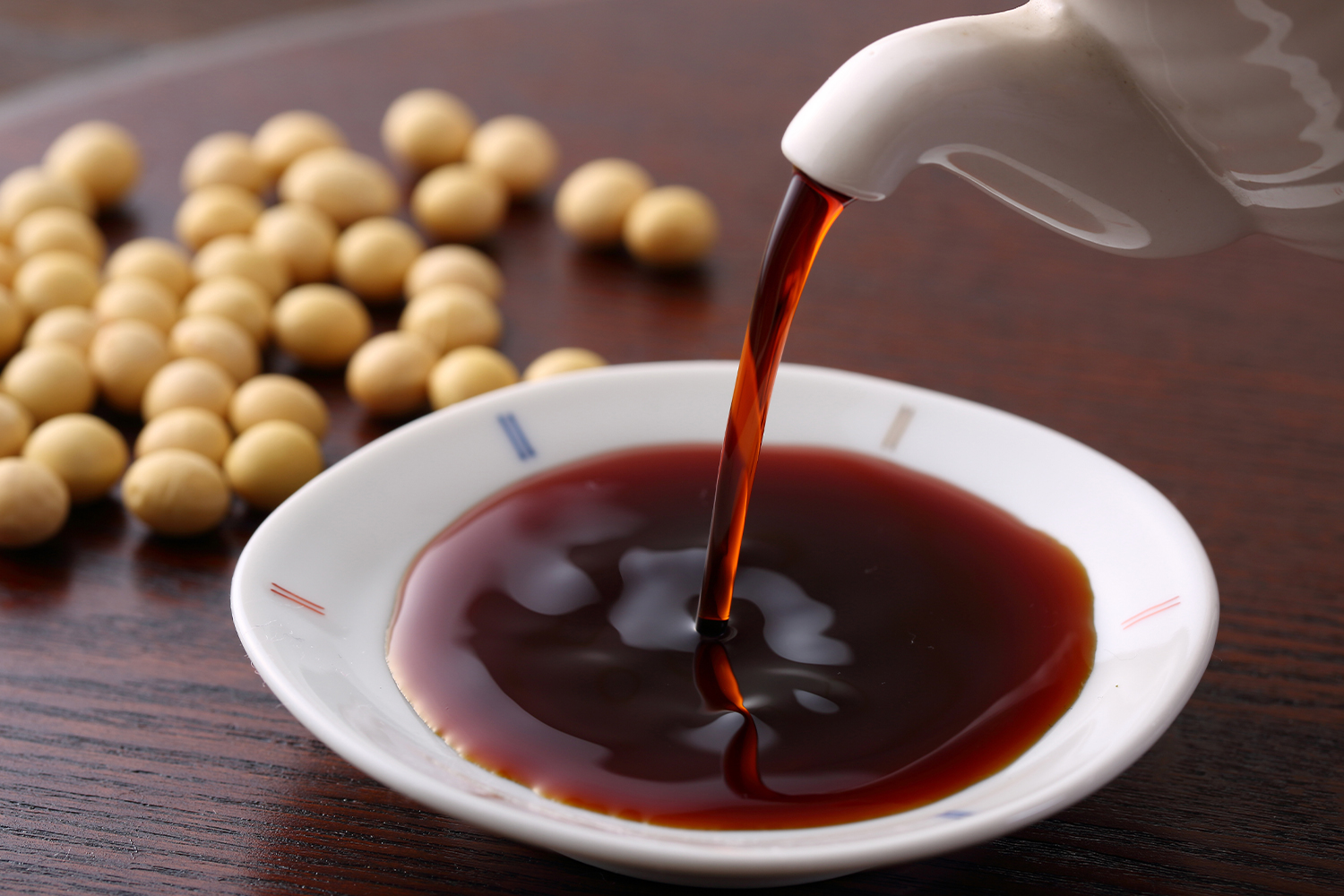
Koikuchi Shoyu or dark soy sauce is the most versatile and common. Made with equal parts of soybean and wheat, it has a robust, well-balanced flavour of salty, sweet and tangy; with about 16% salt content. Great for most Japanese recipes, but best for marinades, basting sauces, dips and stir-fries.
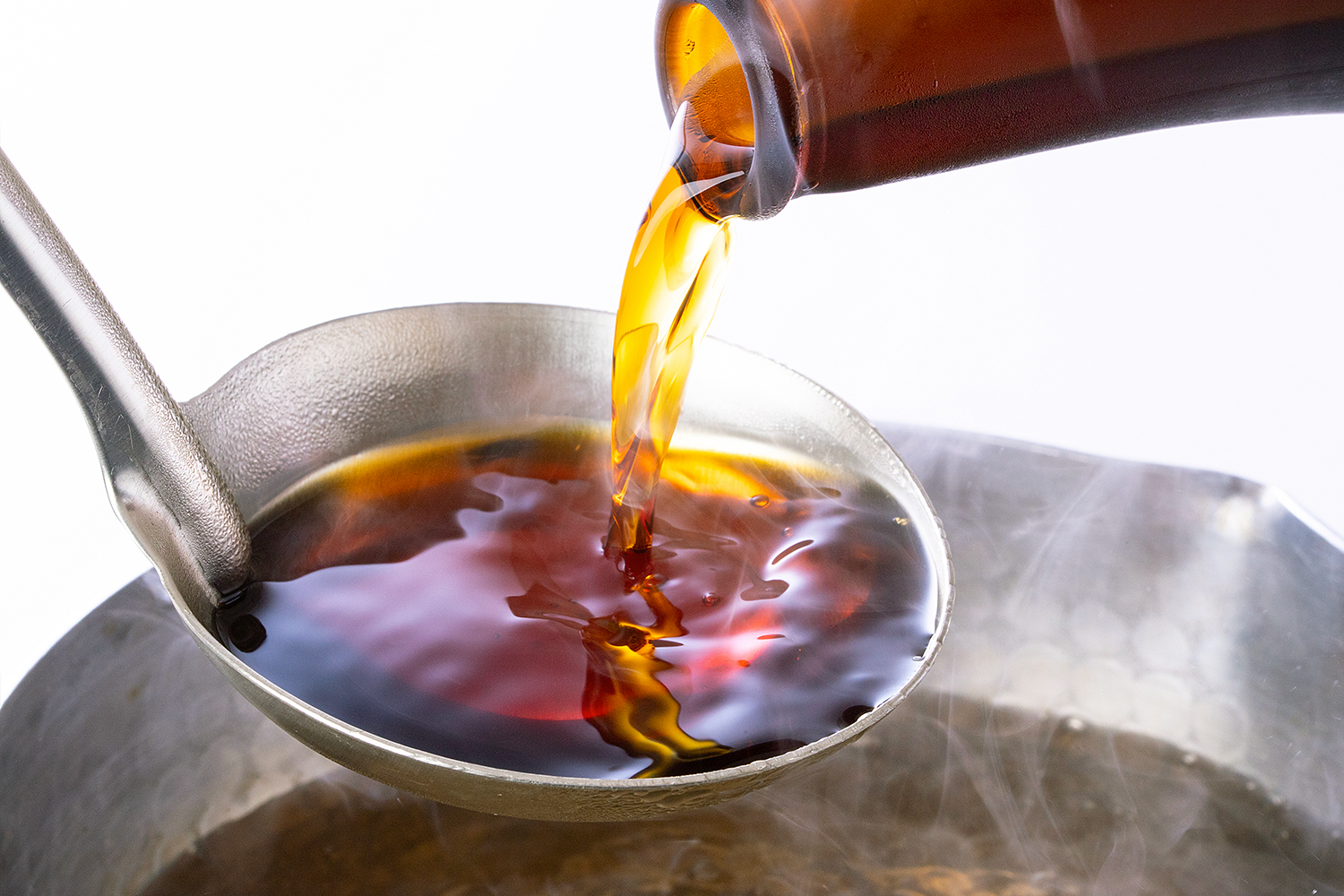
Usukuchi or Light Shoyu is also made with soybeans and wheat, but with the extra ingredient of fermented rice. It also has a much higher salt content, 18-19%, added to suppress the fermentation process. The light colour and saltier taste are ideal for simmered dishes, stews and soups.
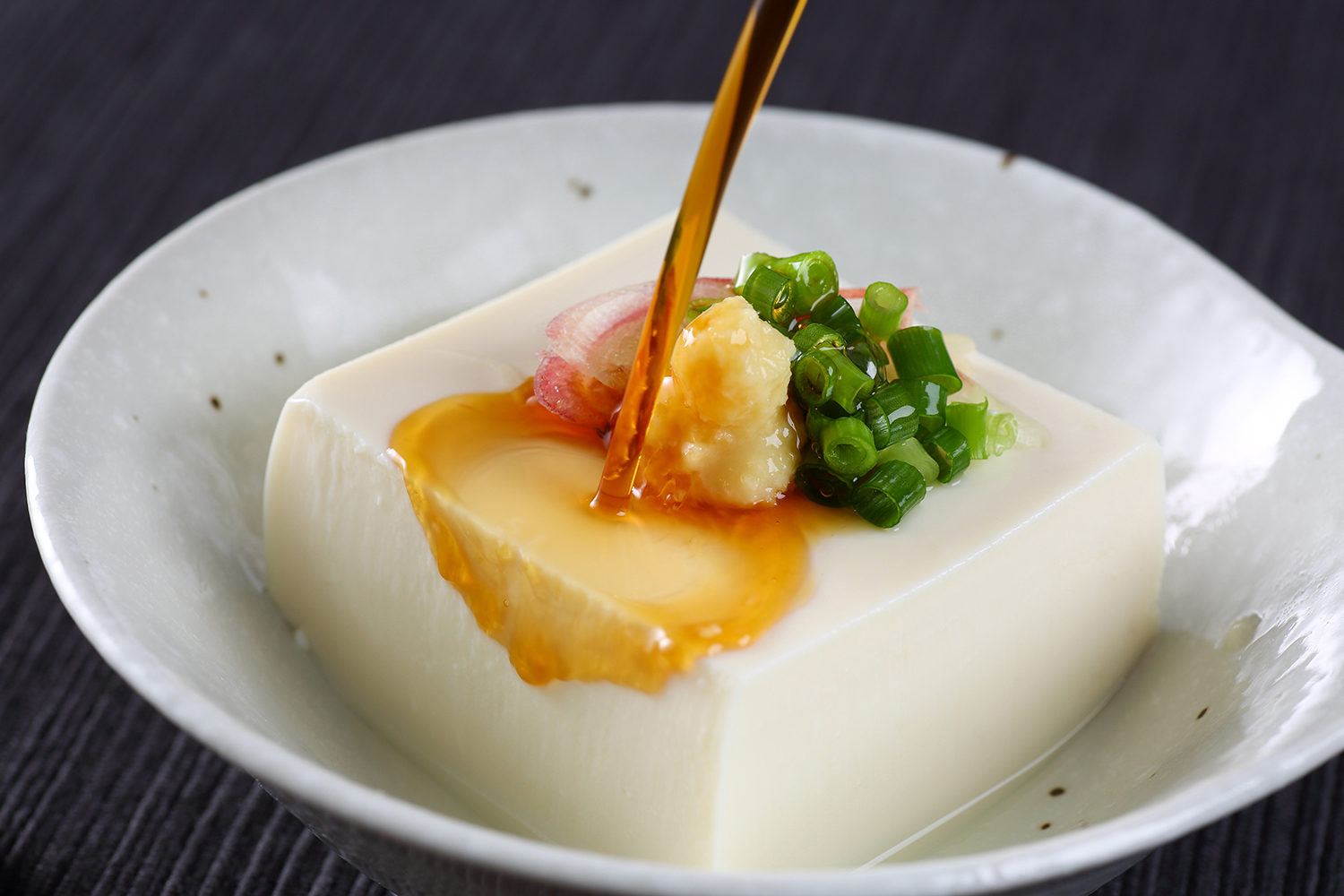
Even lighter in colour is Shiro Shoyu or White Soy Sauce, made with very little soybean and contains more sugar and salt. Rich flavour without ‘darkening’ your dish’s main ingredients. Great for steamed dishes, hotpots and soups.
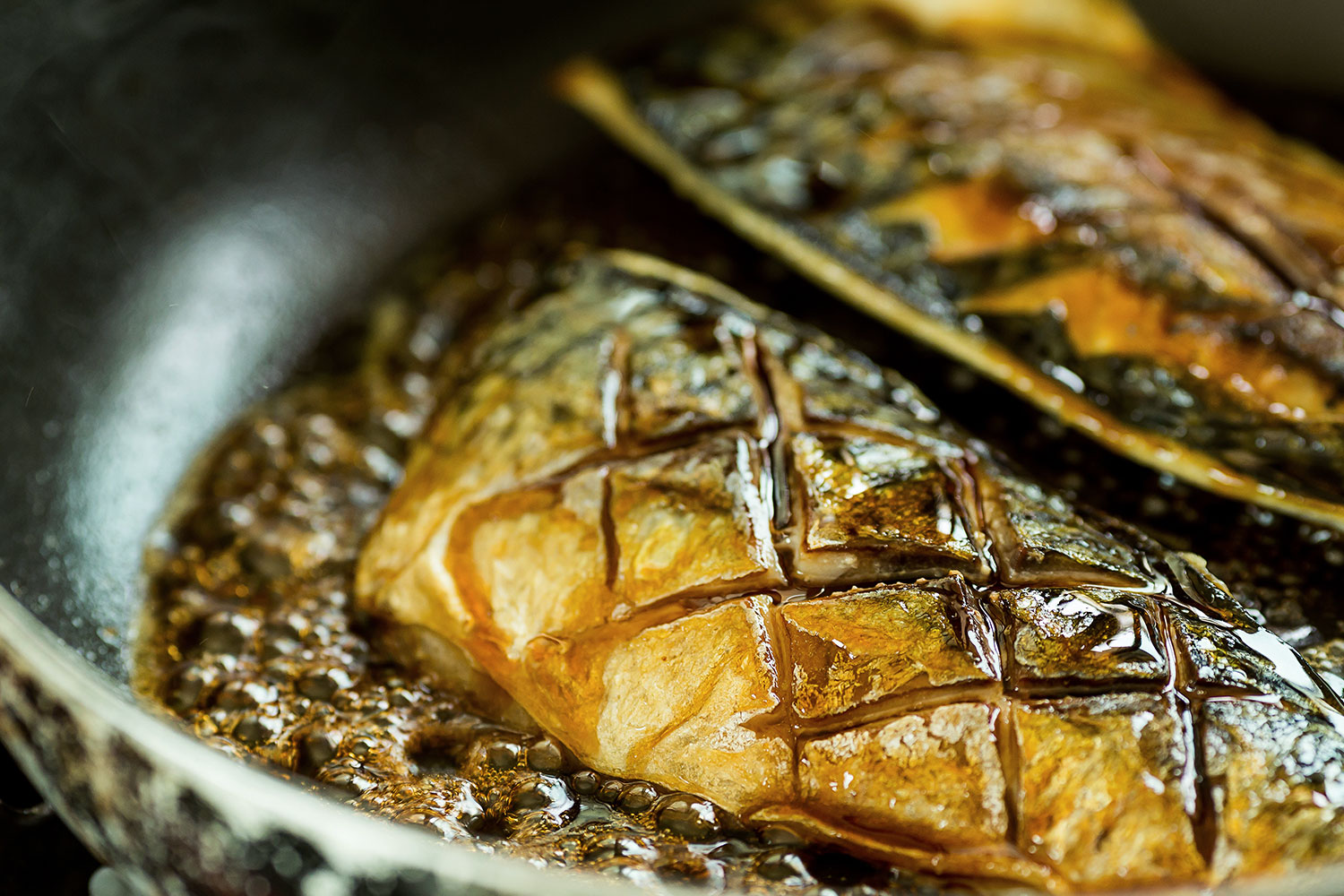
The ‘opposite’ of Shiro Shoyu is Tamari Shoyu, made almost entirely of soybeans; with a thicker texture and deeper umami flavour. A delicious dip sauce for sushi and sashimi, sauce-rich delights, teriyaki and salads. Also often considered a gluten-free Shoyu, for it has little to no wheat.
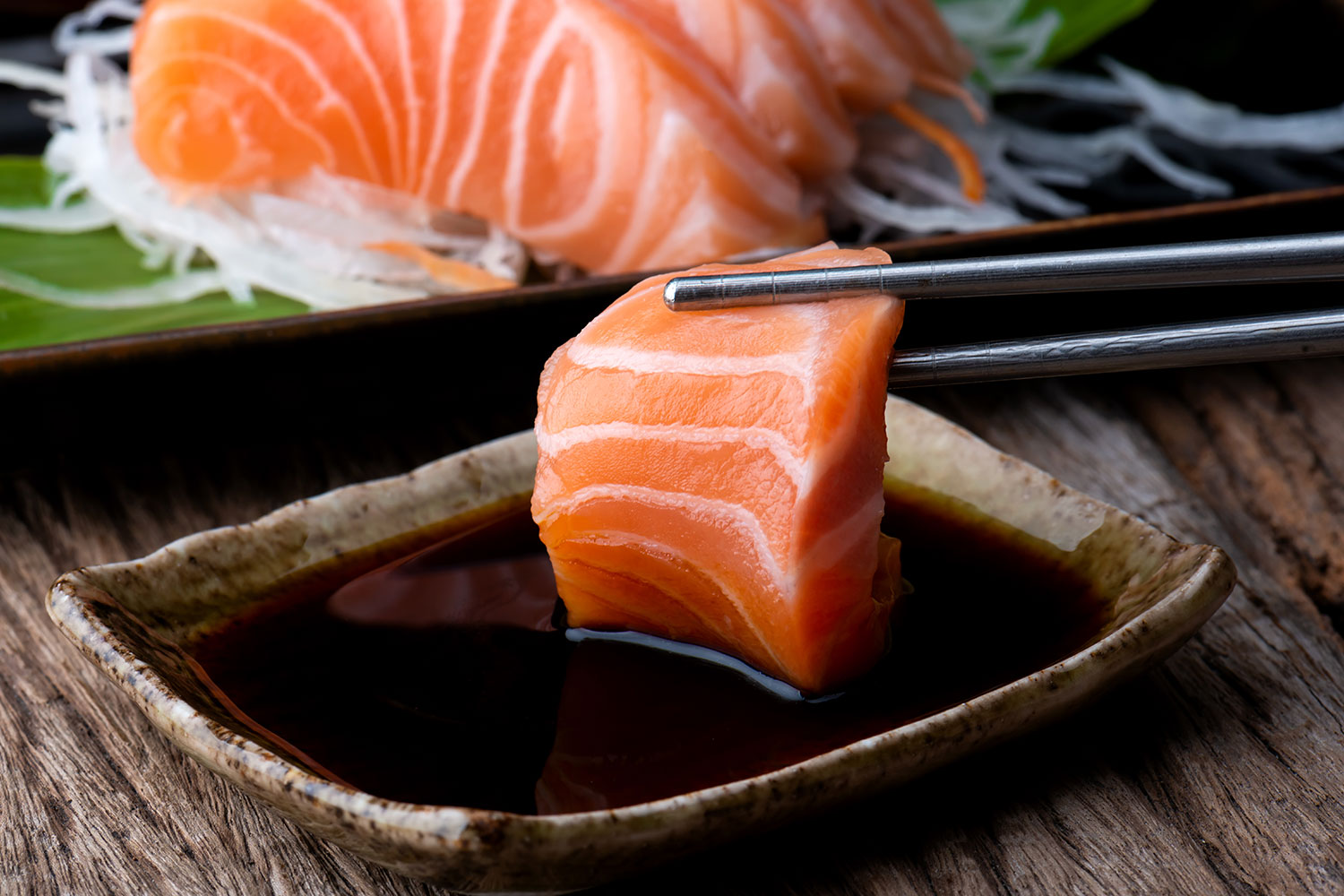
Double-brewed Shoyu, as in raw Shoyu brewed twice, producing an intense dark red-brown colour and much thicker than other variants, with a strong flavour. A rich dipping sauce for sushi and sashimi that blends well with the raw fish freshness.
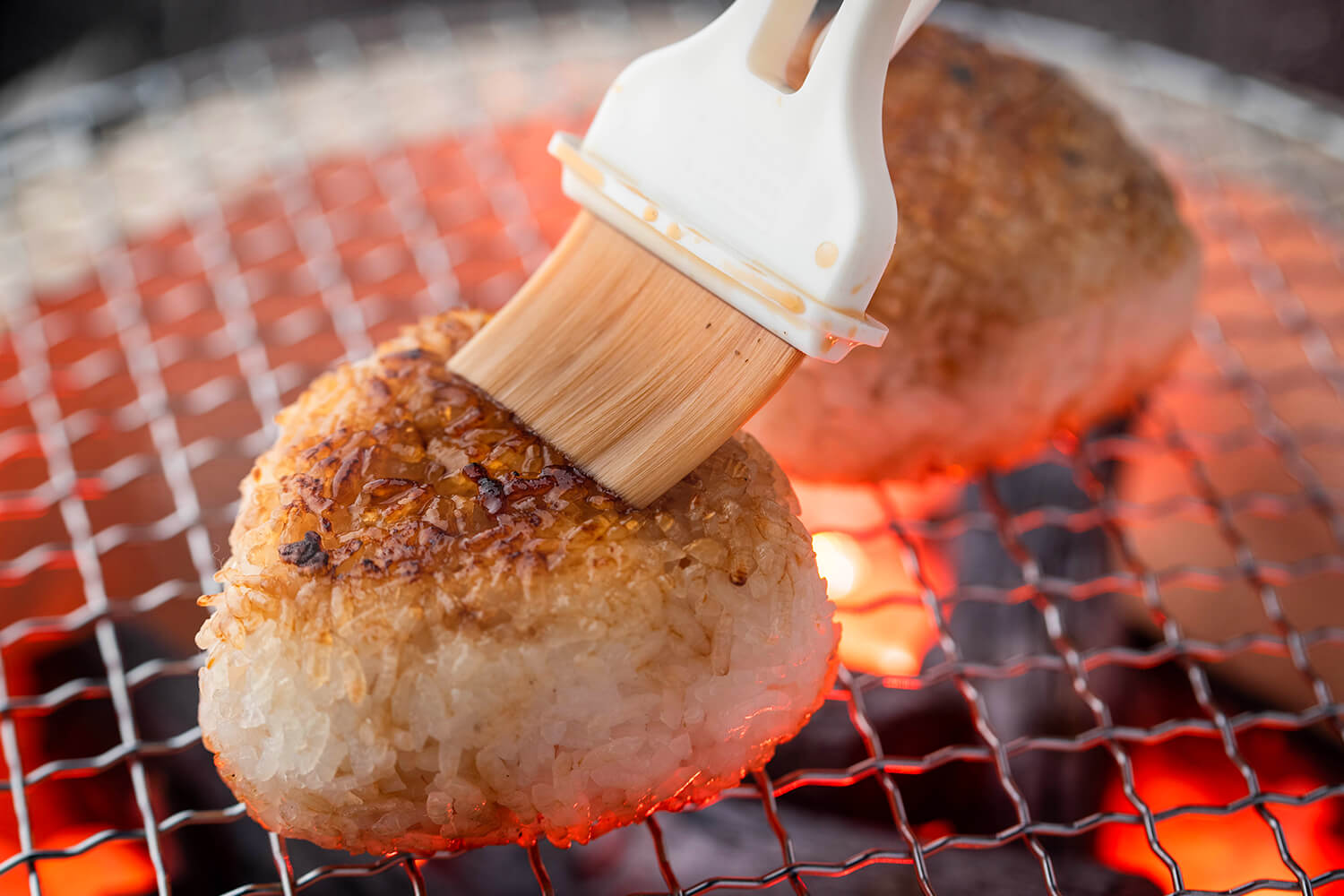
Amakuchi Shoyu is Sweet Soy Sauce, a feature of Southern Japanese cooking. As the name says, it has a high sugar content and is distinctly sweet with a salty undertone. Perfect for summertime sashimi and onigiri rice balls, as well as soups and simmered comfort dishes for winter.
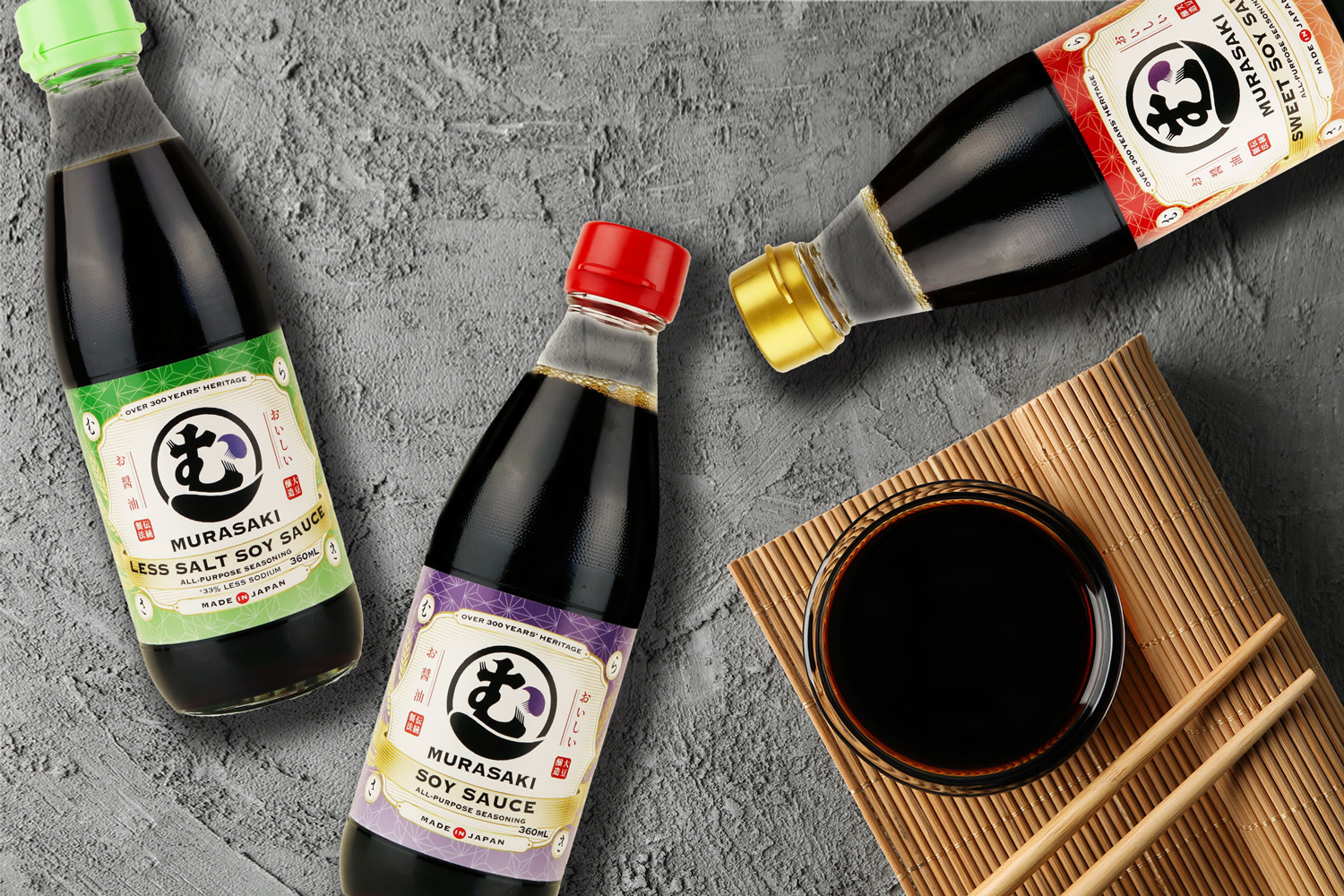
Japanese cuisine’s growing popularity around the world has brought many Shoyu brands with different variants to the market. Murasaki is a premium example: the main Shoyu producer in the Tsuchiura region, with over 300 years of artisanal history since 1688. Their unique recipes and craftsmanship is honed through 18 generations following the traditional brewing method using 100-year old barrels to develop a pleasant, rich and complex tasting range of three Murasaki Japanese soy sauce products.
The multi-purpose Original Soy Sauce with a rich, complex flavour and aroma, and no added preservative nor MSG. Great for cooking and as a table condiment. Less Salt Soy Sauce has the authentic umami flavour, but with 33% less salt. A healthier option for your recipes. The Murasaki Sweet Soy Sauce makes a delightful dipping and dressing sauce.
All available at your friendly neighbourhood Asian grocer and supermarket. So try them with your favourite Japanese recipes today!

Lighten your mood and rejuvenate your senses with 6 must-try Malaysian drinks!

Pair your hearty barbecues with these refreshing Asian delights!

What are the properties of ginger, and how to pick, store and use ginger in your cooking? Find out here!